Hiking is an extremely rewarding way to escape the stress of daily life and enjoy nature. In recent years, an increasing number of people are discovering the benefits of getting outdoors. And not just during the day. Hiking at night gives you a whole new take on familiar trails, lets you beat the crowds, helps you fit time outdoors into your busy life, and offers other advantages. Here’s why you should start hitting the trails after the sun goes down.
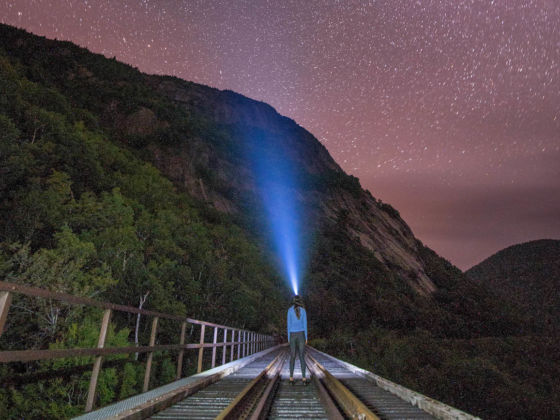
Night Hiking Might Just Become Your New Favorite Outdoor Activity
You’ll have the popular trails to yourself.
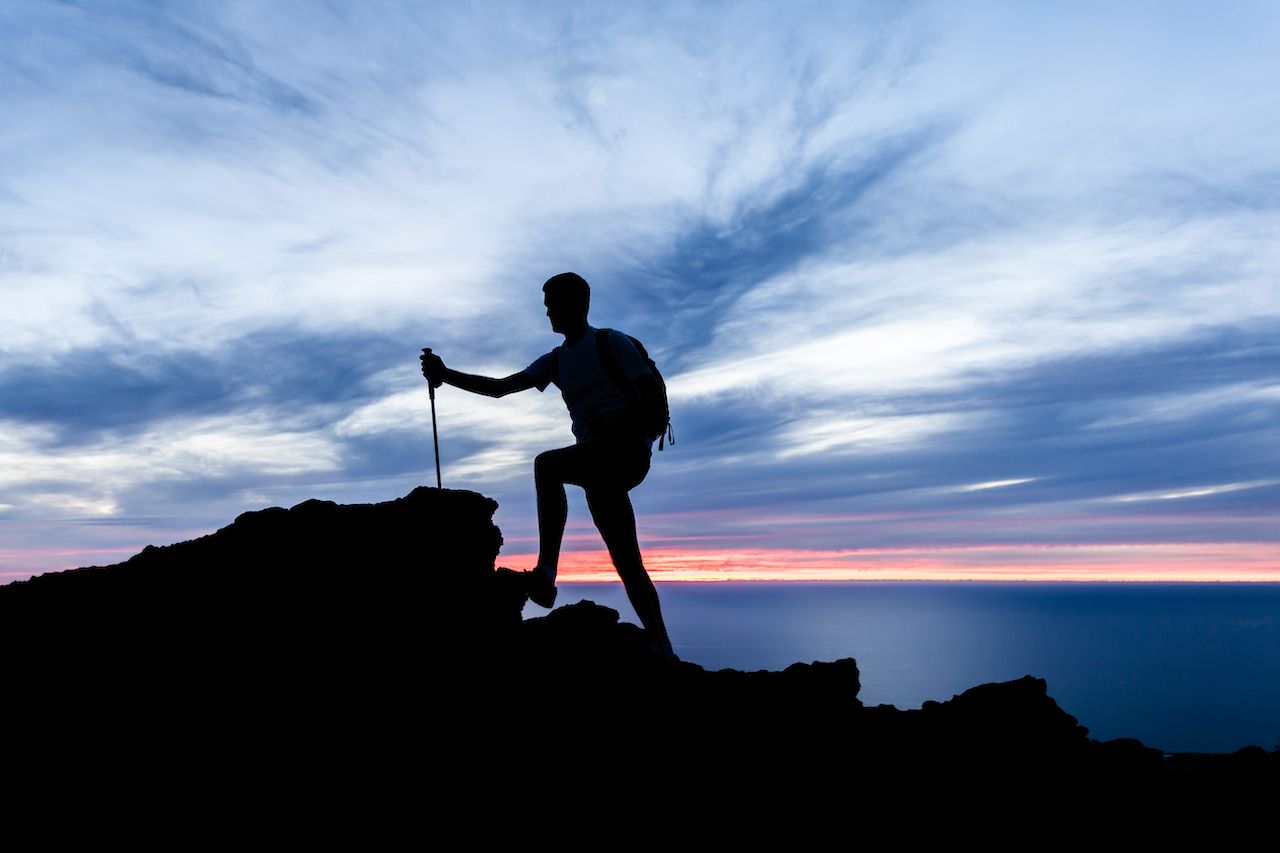
Photo: Blazej Lyjak/Shutterstock
In 2017, 44 million people hit the trails — over three times more people than a decade earlier. This increase in popularity is largely due to the influence of “outdoorsy” posts on social media. The release of films like Wild, based on Cheryl Strayed’s book, and Free Solo, about rock climber Alex Honnold, also contribute to this popularization.
As a result, our trails are becoming more crowded than ever before, making it hard for some to experience the serenity that nature is supposed to provide. But for those lucky enough to have discovered the benefits of hiking at night, concerns about crowds diminish.
While the most spectacular hiking trails are usually the most crowded, the same trails that had overwhelming crowds on them just hours earlier are often completely devoid of people after dark. And some may argue the views, now accentuated by lights from a nearby town or the vast milky way above, are even better at night.
Popular trails like Old Rag in Shenandoah National Park in Virginia or the Mirror Lake Trail in California’s Yosemite National Park rarely offer the solitude that many desire, especially during peak seasons. Consider saving them for after dark.
Of course, there is an inherent risk that comes with night hiking — especially when hiking trails that have technical sections. Make sure to hike with a partner and let someone at home know where you are going and when you intend to leave and return.
You can maximize your time.
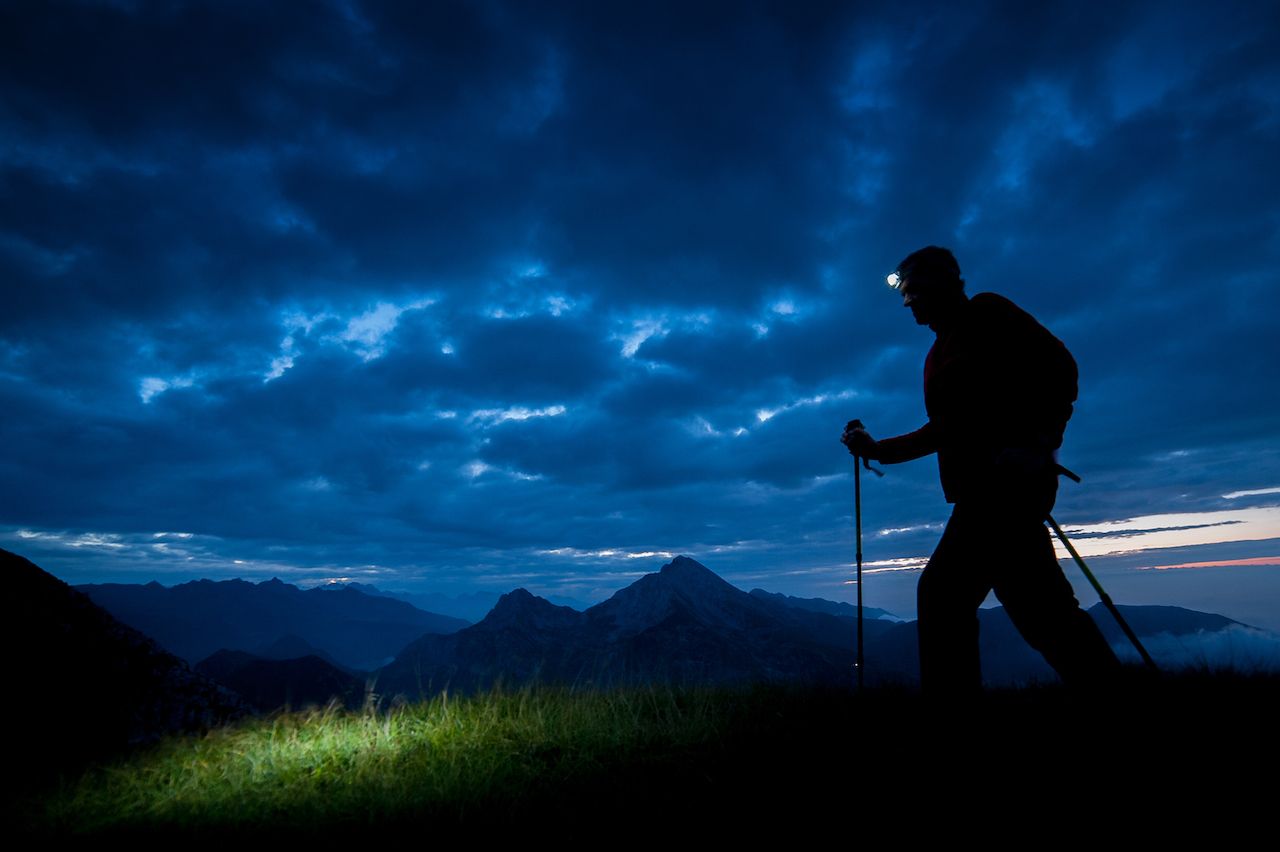
Photo: Pierluigi.Palazzi/Shutterstock
Studies show that some people can’t find the time to spend even two hours per week outside. It’s easy to fall into a daily routine that involves waking up, going to work, and coming home to cook dinner. This routine rarely allows time for much more than an episode of your favorite show followed by bed.
But once you learn to hike at night, the time you thought was only good for Netflix and scrolling through Instagram becomes perfect for getting outside. Suddenly, the days seem just a bit longer, even though your mindset is the only thing that’s changed.
Of course, not everyone lives in a place where a hiking or walking trail is easily accessible. This mindset can also be applied to a weekend trip that seems just out of reach during a normal two-day weekend.
The night sky is on full display.
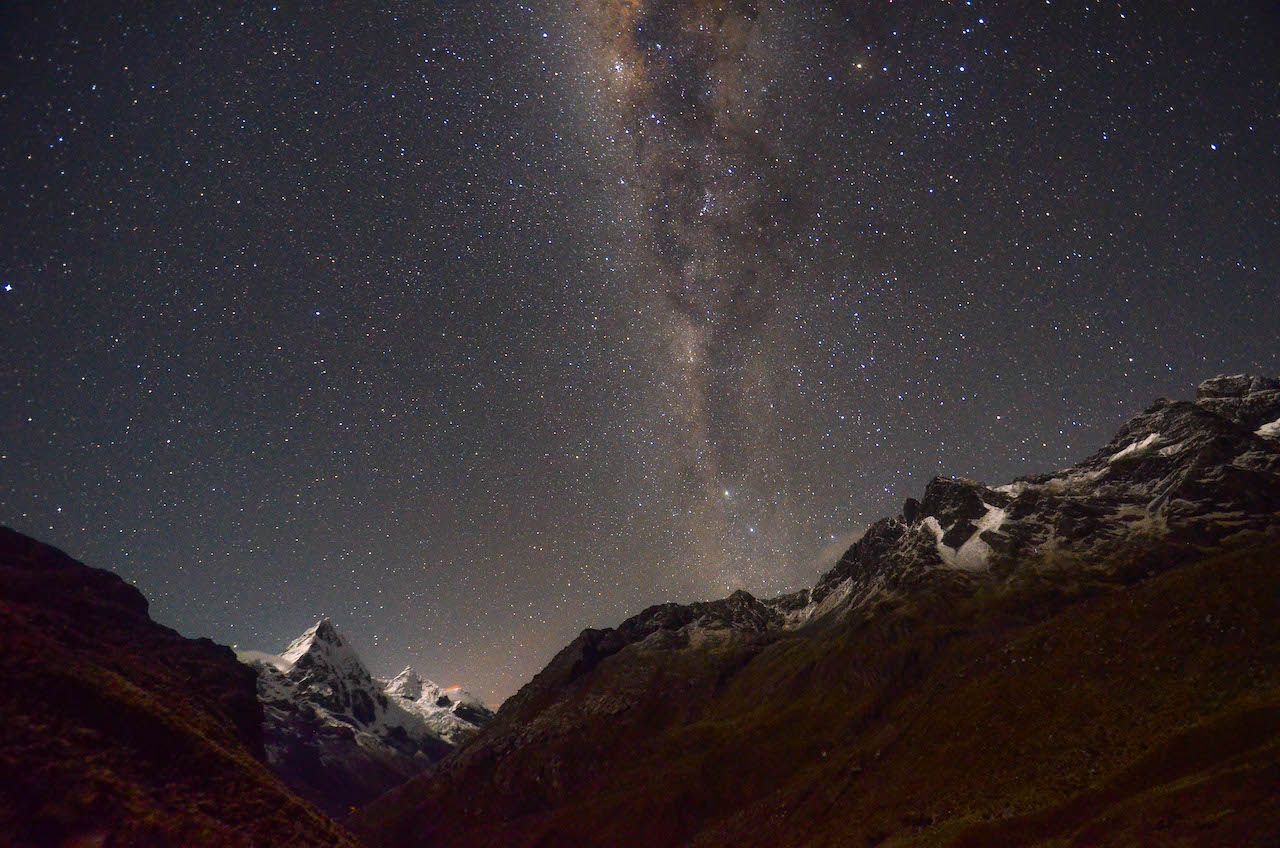
Photo: Josh Laskin
Daily life is often oversaturated with work-related concerns and overly accessible technology, which make it easy to overlook simple, natural wonders. One of the simplest and most humbling of those wonders — the night sky — is nearly impossible to ignore while hiking at night.
Looking at the stars can be a powerful meditative experience that instills wonder, curiosity, and a new sense of perspective. While staring into space, our minds tend to wander away from the stresses of everyday life, giving us a much-needed break from reality.
If you embark on a foot-powered journey during a new moon, consider bringing a star chart to help you identify new constellations. Or if it’s closer to a full moon, do away with the headlamp altogether and allow your eyes to naturally adjust to the landscape.
Although artificial light from our cities and towns often makes it difficult to enjoy the night sky in its natural state, there are still plenty of places to enjoy the stars. The 2,600-acre North Fork Park, located minutes from Ogden, Utah, is one of the state’s 12 designated International Dark-Sky Association parks. There are hiking trails of varying difficulty in the park, from the Cutler Trail, which follows an exposed ridge (offering unobstructed views of the night sky) to the 9,700-foot summit of Ben Lomond Peak to the easier North Fork Park Waterfall trail.
In Pennsylvania, Cherry Springs State Park is home to the darkest skies east of the Mississippi and offers a one-mile interpretive walking trail and additional trail systems surrounding the park. Utilize tools available online to determine where the darkest skies are near you.
Night hiking shines new light on familiar trails.
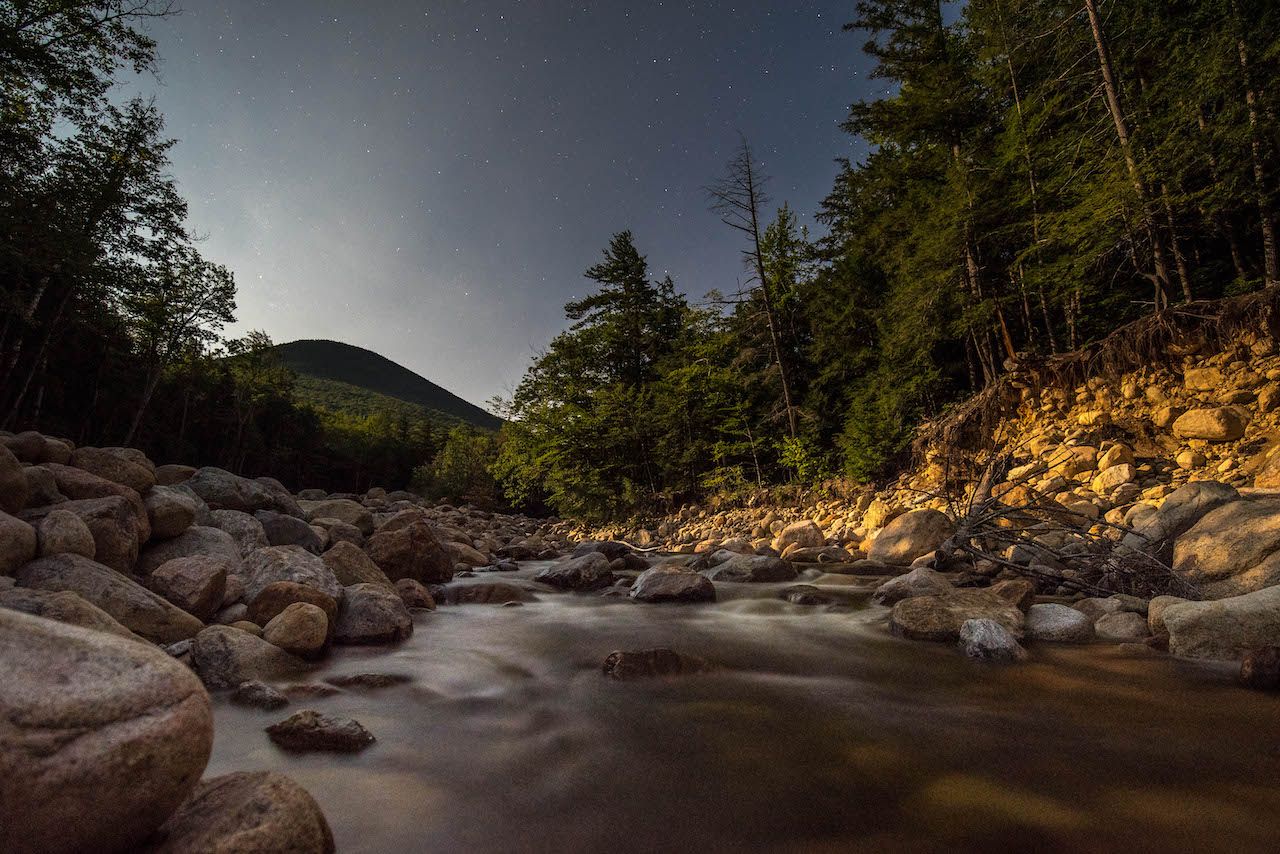
Photo: Josh Laskin
At night, the world is transformed. Primal senses become heightened, and a new sense of awareness is gained. The same trail you’ve hiked a hundred times before is experienced in an entirely new way.
A new world comes alive as bats dive from all directions, trying to catch their next meal, while the call of owls, coyotes, and other nocturnal creatures fills the air. Your headlamp beam illuminates a cool rock or tree that previously went unnoticed. Even if you’ve hiked this trail dozens of times, it seems unfamiliar — but in a new and exciting way.
Night hikes are empowering.
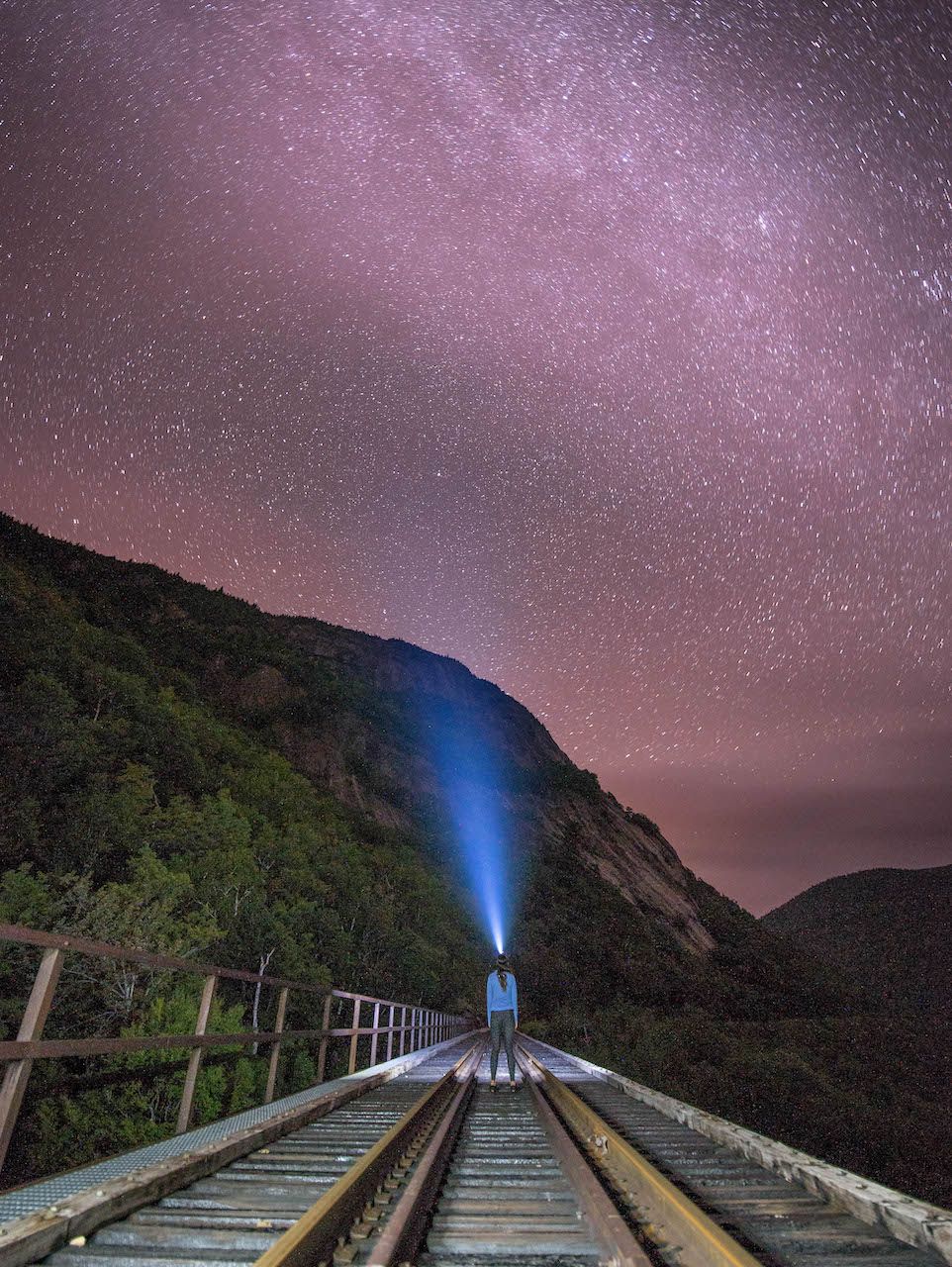
Photo: Josh Laskin
Breaking out of your comfort zone to hike at night can be intimidating. But once you embark on your first night hike, those fears will shrink until they seem inconsequential. Overcoming these fears builds confidence and proves that you are capable of more than you thought. The ability to open up to and face new challenges can be an empowering skill — one that becomes easier and more rewarding over time.
How to prepare for your first night hike
Being prepared helps increase the odds of a successful trip and, consequently, increases confidence. In addition to the safety precaution of always hiking with a buddy and informing others of your plans, a high-quality headlamp, such as the Petzl Tikkina or the Black Diamond Spot 325, helps minimize the risk of hazards that become greater in the dark — like tripping on uneven terrain. A headlamp also helps you notice the details on the trail that you may not have noticed during the day and is especially useful when hiking closer to a new moon.
It’s also important to remember that it can often be significantly cooler at night than during the day. Be sure to bring synthetic layers and a small backpack to store them in. Sturdy hiking boots can also help with ankle stability on uneven terrain, although they tend to be heavier than lightweight trail sneakers. And while trekking poles are entirely a personal preference, they can be extremely useful during stream crossings and on rocky trails.